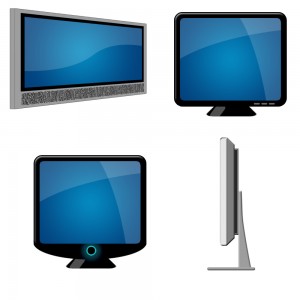 The future of advertising and computer displays is wrapped up in an extraordinary new type of ‘paper’.
The future of advertising and computer displays is wrapped up in an extraordinary new type of ‘paper’.
Thin, bendable displays are on the up and up, with cutting-edge e-paper technology already being used for electronic signs and billboards.
An Old Idea
E-paper has in fact been around since the 1970s. But the Gyricon technology used in those days resulted in poor resolution and it was also an expensive process, so it has taken a while for it to enter the market.
However, as we know from numerous other examples, once a viable concept is in place it’s just a matter of waiting for the technology to catch up.
Flexible Displays and e-Ink
Thanks to Plastic Logic, a leader in the field of flexible displays, technology has definitely caught up with the concept. The company is working on developing unbreakable displays using e-paper for mobile devices. This will enable easier viewing of documents and web pages.
Smartphones have always had to compromise on their screen size, and Plastic Logic have come up with the idea of using a wafer-thin companion device that incorporates a display using plastic transistors, one of the building blocks of the new organic electronics.
An Android app transfers data via Bluetooth or Wi-Fi to send emailed web pages or documents across to the e-paper companion device, with onscreen controls being used to scroll through the pages.
Plastic Logic currently markets their technology to OEMs and product developers for integration in end devices. Constant R&D means that new concepts can be brought to market through a variety of channels, including the use of flexible displays.
CEO Indro Mukerjee has said that “plastic Logic’s development of a color flexible plastic display is particularly significant, since the same process could enable unbreakable, flexible display solutions with other media such as LCD and OLED.”
And by breaking through that particular barrier, the Plastic Logic technology is finally bringing a fully functional and flexible color screen a step nearer.
Foldable Computer Screens
E-paper also looks set to change the way we interact with computers. Not only is e-paper much more robust than traditional displays, but it can also be folded up or curled like laminated paper. Fujitsu is already utilising these properties in its designs for a Fabric PC. The idea is that the PC’s display screen will be large but flexible enough to be folded away when you’ve finished using it, and stored in a carry case.
E-paper displays also use up a lot less power than traditional displays, which entails smaller batteries and/or longer battery life.
An Upcoming Technology
Creating a range of color displays that can react fast enough to support video output is one of these challenges, although one possible pointer is Plastic Logic’s innovative use of filters to add color to otherwise monochrome e-ink displays on their prototype flexible smartwatch.
Out with the Old
Organic electronics and e-paper will find numerous applications in equipment and gadgets we’re familiar with across the board. Already, our traditional alkaline batteries, PCs and laptops are starting to feel just a little bit antiquated, along with wires, rigid circuit boards and solid state electronics in general.
All these look set to follow the Psion Organiser and ZX-Spectrum of the 1980s into museum cabinets pretty soon, to be replaced with a heady new world of flexible screens, painted-on electronic circuitry and plastic components. Watch this space.
Image credit: mrceviz











Speak Your Mind